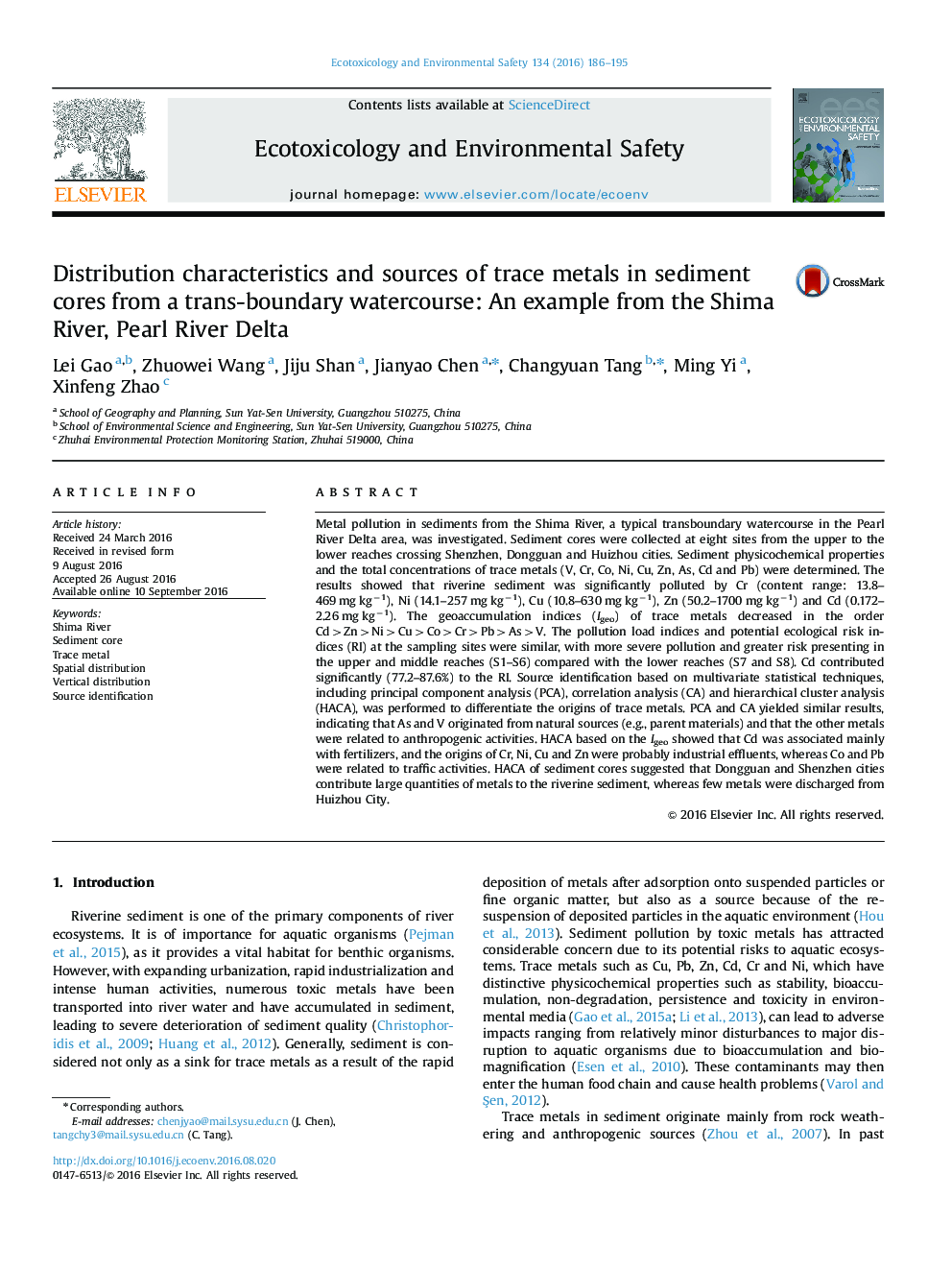| کد مقاله | کد نشریه | سال انتشار | مقاله انگلیسی | نسخه تمام متن |
|---|---|---|---|---|
| 4419157 | 1308446 | 2016 | 10 صفحه PDF | دانلود رایگان |
• Sediment cores in the Shima River suffered from severe Cd, Zn, Cu, Ni and Cr pollution.
• Spatial distribution of trace metals showed differences, mainly resulting from human activities.
• Sediment As and V were derived from the natural source—weathering of parent materials.
• Anthropogenic emissions significantly contributed to sediment trace metals, e.g. Cd, Cu and Zn.
Metal pollution in sediments from the Shima River, a typical transboundary watercourse in the Pearl River Delta area, was investigated. Sediment cores were collected at eight sites from the upper to the lower reaches crossing Shenzhen, Dongguan and Huizhou cities. Sediment physicochemical properties and the total concentrations of trace metals (V, Cr, Co, Ni, Cu, Zn, As, Cd and Pb) were determined. The results showed that riverine sediment was significantly polluted by Cr (content range: 13.8–469 mg kg−1), Ni (14.1–257 mg kg−1), Cu (10.8–630 mg kg−1), Zn (50.2–1700 mg kg−1) and Cd (0.172–2.26 mg kg−1). The geoaccumulation indices (Igeo) of trace metals decreased in the order Cd>Zn>Ni>Cu>Co>Cr>Pb>As>V. The pollution load indices and potential ecological risk indices (RI) at the sampling sites were similar, with more severe pollution and greater risk presenting in the upper and middle reaches (S1–S6) compared with the lower reaches (S7 and S8). Cd contributed significantly (77.2–87.6%) to the RI. Source identification based on multivariate statistical techniques, including principal component analysis (PCA), correlation analysis (CA) and hierarchical cluster analysis (HACA), was performed to differentiate the origins of trace metals. PCA and CA yielded similar results, indicating that As and V originated from natural sources (e.g., parent materials) and that the other metals were related to anthropogenic activities. HACA based on the Igeo showed that Cd was associated mainly with fertilizers, and the origins of Cr, Ni, Cu and Zn were probably industrial effluents, whereas Co and Pb were related to traffic activities. HACA of sediment cores suggested that Dongguan and Shenzhen cities contribute large quantities of metals to the riverine sediment, whereas few metals were discharged from Huizhou City.
Journal: Ecotoxicology and Environmental Safety - Volume 134, Part 1, December 2016, Pages 186–195
